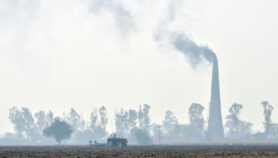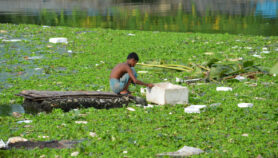By: S. Singh
Send to a friend
The details you provide on this page will not be used to send unsolicited email, and will not be sold to a 3rd party. See privacy policy.
[NEW DELHI] Improper management of toxic fly ash from burning low-grade coal in thermal power plants (TPPs) in India is posing a threat of radiation exposure, a new study finds.
Analyses of three TPPs in the state of West Bengal showed elevated radiation levels in the surrounding areas. Ash samples from these power plants showed concentration of natural radionuclides like Uranium-238, Thorium-232 and Potassium-40 are 2—3 times higher than coal feedstock.
The findings of the study were published January by Springer in ‘Modelling Trends in Solid and Hazardous Waste Management’.
India meets 70 per cent of its energy requirements by burning low-grade coal that produces large amounts of ash which is disposed of by dumping into ash ponds where it dries and becomes hard and compact. “But continuous removal and excavation for various alternative applications makes the ash prone to dispersion, enhancing the ambient radionuclides present and subsequent radiation exposure," Debashish Sengupta, lead author of the study and scientist at Indian Institute of Technology, Kharagpur, tells SciDev.Net.
The study analysed soil, ash, and coal samples from the neighbouring area of TPPs. Groundwater was also tested for contamination with radionuclides and heavy metals. “In general, the radioactivity in the nearby areas is 3—4 times higher values than the prescribed limit,” the study notes.
Sengupta says novel remedial measures are available to mitigate associated risks such as insulating bottom ash disposal ponds to prevent groundwater contamination and protective layers to minimise exposure to fly ash.
The study also calls for better and more efficient Electrostatic Precipitators (ESPs) to trap fly ash. "Trapping of fine fly ash particles in the ESPs is not so efficient in the older TPPs," Sengupta says.
Ash can be a valuable resource when handled and use properly. Rare earth elements, heavy metals and radionuclides can be extracted from the contaminated soil and the remainder used in land reclamation. "The use of fly ash as agricultural amendment, fly ash bricks, cement, and concrete and in pavements and highways is of considerable significance as also in the production of glasses and glass-ceramics," Sengupta adds.
This piece was produced by SciDev.Net’s South-East Asia & Pacific desk.














